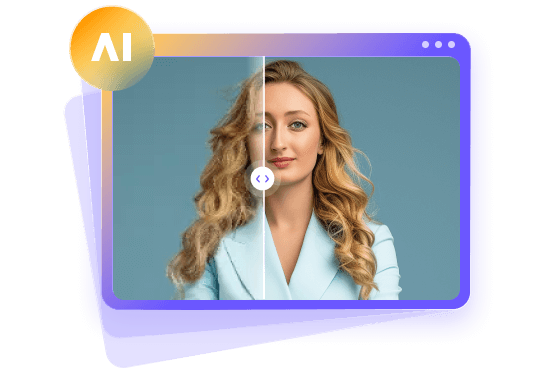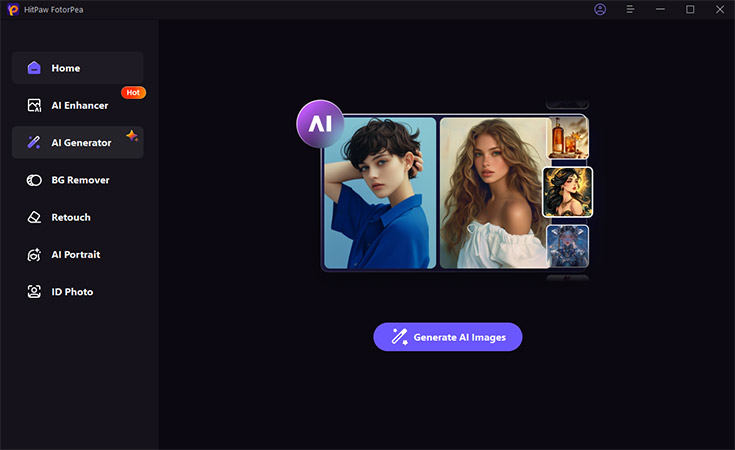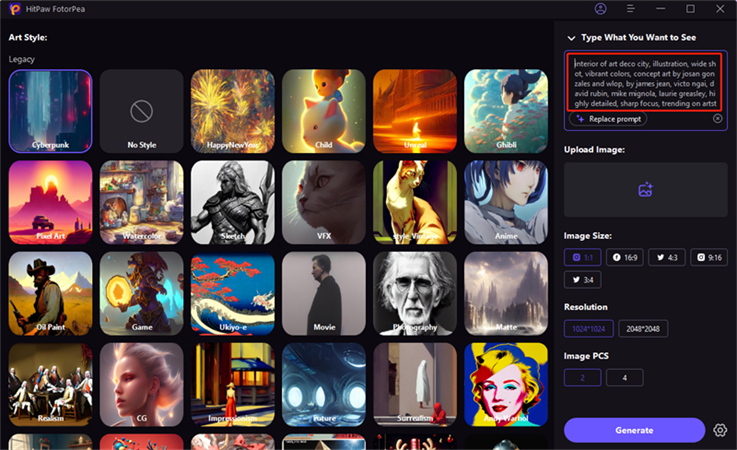Text to 3D Model: Top 3 AI Tools to Turn Prompts into 3D (2025 Guide)
Text-to-3D model creation is an innovative technology used to convert a simple written explanation of an object into a real 3D file that can be used in multiple applications. Rather than physically sculpting, texturing, and rigging a 3D model which may require days to weeks, AI-based visual tools can now create usable 3D assets based on the text description of the desired object within minutes.
This complete guide can help you discover the best free and AI tools to turn text into 3D models, learn some practical examples of application in various fields, and get a bonus tip to create breathtaking 3D-stylized images even quicker using HitPaw FotorPea. If you are a game developer, 3D artist, teacher, or a creative practitioner, this guide will enable you to leverage the power of AI to boost your 3D content creation process.
Part 1: What Is Text-to-3D Model Generation?
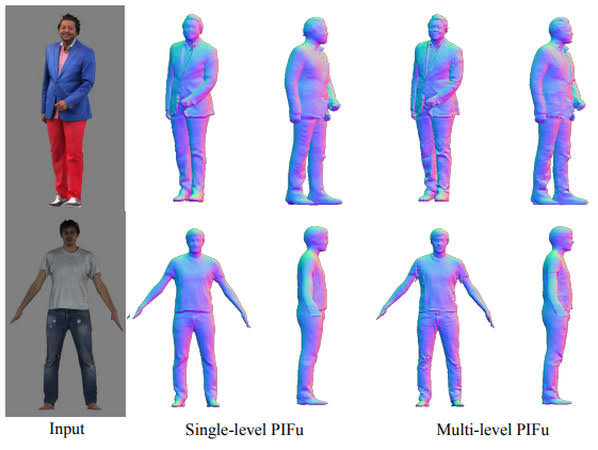
Text-to-3D model generation is a sophisticated AI technology capable of transferring written descriptions to the form of a three-dimensional digital object. Fundamentally, this involves the use of natural language processing (NLP) and advanced methods of 3D generation (diffusion models, Neural Radiance Fields (NeRF), and generative adversarial networks).
The technology-based approach leverages superior language models to interpret the semantic meaning of your text prompt as the first stage of the technology. The AI will then decode this knowledge into geometrical forms, generating mesh structures, textures, and materials that closely resemble the object in question. Contemporary text-to-3D models can create forms ranging in complexity from the simple, geometric, to more organic forms with realistic surface attributes.
From Manual Modeling to AI Automation
Such a method, in contrast to conventional 3D modeling processes, does not presuppose any depth of technical understanding of specific software, such as Blender, Maya, or 3ds Max. Manual work on each vertex, edges, and faces to construct geometry and then texture via UV mapping, and assign materials are steps that can be nerve-wracking to a non-pro and cumbersome even to a pro.
These technical challenges are eradicated by the AI-driven approach, and now users have the opportunity to concentrate on their creative vision, rather than on the technical solution. Just write in your own words what you would like to make and the AI does all the difficult mathematical equations to achieve the 3D geometry.
Part 2: Top 3 Free & AI Tools to Convert Text to 3D Models
1. Spline AI - Beginner-Friendly and Browser-Based
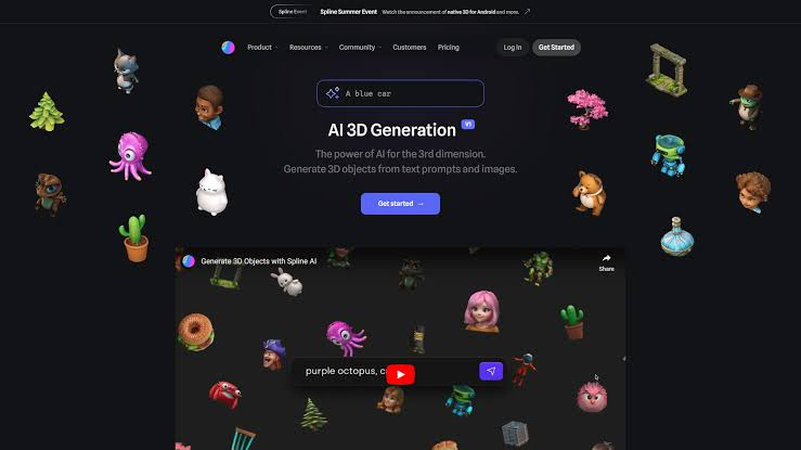
Spline AI is one of the most approachable text-to-3D applications, with its ability to work directly through your web browser without the need to install any software at all. It is good at generating stylized 3D objects, which can be used in web applications, presentations, and creative works.
Key Features of Spline AI
- Intuitive browser-based interface
- Real-time 3D preview and editing
- Export GLB, GLTF, and native Spline format
- Integration with web presentations and work on web projects
Best Suited To: Web designers, digital marketers, teachers, and novices in need of quick 3D resources to make online projects. Its friendly interface also makes the platform suitable to anyone new to the 3D modeling field who would like to achieve professional results without climbing up the learning curve.
Practical Applications: You can do this to create a futuristic smartphone with holographic display as a presentation, or futuristic animals in cartoon style as an educational website.
2. Text2Mesh - Open-Source and Modifiable
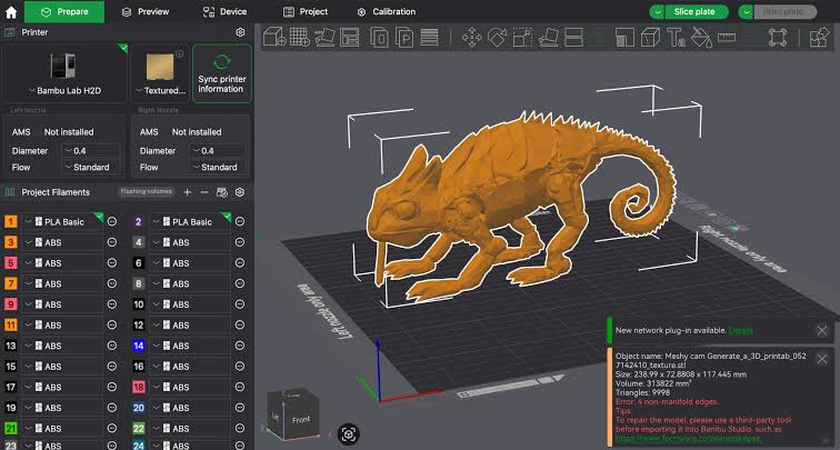
Text2Mesh is the state of the art in open-source 3D generation, and it places the generation process totally under control of researchers and developers. Developed on premium neural networks, this tool is extraordinarily flexible with regards to the folks who desire to investigate and alter the underlying algorithms.
Key Featuresof Text2Mesh
- Full access to source code on GitHub
- High levels of customizations available to expert users
- Research and business applications
- OBJ, PLY, and custom mesh formats
Ideal Use: Researchers, advanced 3D artists, and developers who require more flexibility or wish to build their own text-to-3D functionality into their application. This application is ideal for individuals who are accustomed to command-line tools and Python programming.
Usage Example: Automatically create complex architectural shapes to use in games or generate organic shapes to make 3D printing projects where precision geometry is essential.
3. Luma AI Genie - Rapid Online AI with Life-like Results
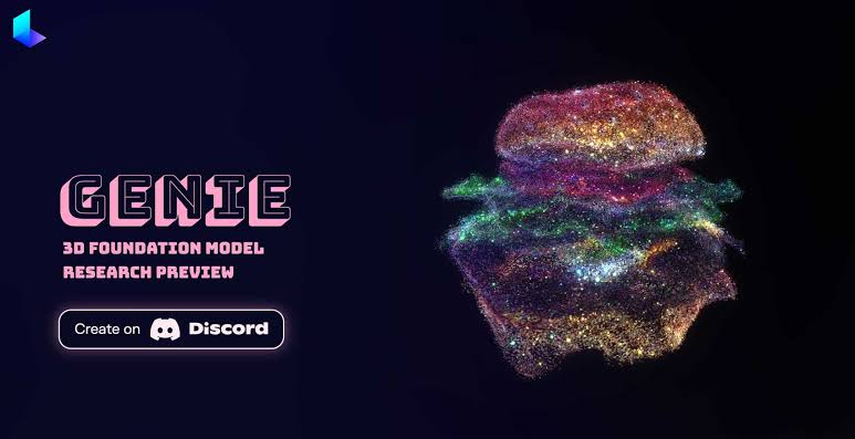
Luma AI Genie is aimed toward generating 3D models of high realism with great speed and quality. This cloud computing offers high-performance GPU clusters to create detailed models that can match a traditional asset.
Key Features of Luma AI Genie
- Photorealistic texture generation
- High speed of processing (usually 2-5 minutes)
- Quality mesh topology, professional quality
- Export options: GLB, OBJ, FBX, and USDZ
Best Used By: Experienced 3D artists, game developers, and other creators that require top-of-the-line assets to work on commercial products. Its realistic output sees it finding a special value in architectural visualization and product design.
Use-Case Example: Use to create fully detailed furniture assets to visualize an interior design or to create realistic character assets that are to be used as a prototype in a game.
Part 3: Who Needs Text-to-3D Tools & Real-World Use Cases
1. Game Developers - Rapid Prototyping
Game development teams are using text-to-3D tools in order to speed up the asset creation pipeline. Developers can now make factual constructions of environmental assets, props, and even character concepts in a very short period of time rather than taking a matter of weeks to get the concept art, and even the 3D models.
Case Study: A small indie developer made more than 200 different variations of props in their Fantasy RPG game using text-to-3D generation in less than two weeks; what would have previously taken a team of hard-working 3D artists months.
2. 3D Artists - Speed Up Ideation
These tools are starting to be used by professional 3D artists not to diminish their own ability, but so that their creative process can be interpreted better. Text-to-3D generation is also useful as a brainstorming aid, assisting the artist to quickly conceptualize ideas before investing time on manual intensive modeling.
In-the-Field Use: Text prompts allow character designers to brainstorm through dozens of creature concepts in a matter of minutes, by showing them what works, so they can focus the rest of their time in normal 3D software to develop the most viable designs.
3. AR/VR Creators - Asset Generation
AR and VR experiences hinge on huge libraries of 3D content. Text-to-3D tools allow AR/VR creators to fill virtual environments with a variety of objects in a short amount of time, including everything from commonplace objects to fantastic and imaginary elements.
Innovation Example: An educational VR site generates historically accurate artifacts and architectural features to teach history immersively, so students can study in-depth 3D recreations of prehistoric civilizations.
4. Educators & Students - Simplified 3D Content Creation
Learning institutions are integrating text-to-3D applications into their curriculum so as to enable students of different programs to access 3D creation. Whether science instructors out of molecular modeling or art students investigating the principles of digital sculpture, these tools bring 3D creation to the democratic classroom.
Educational Impact: Text-to-3D generation enhances the learning process in a middle school science program, asking students to develop their own 3D models of cells, organs, and organisms to aid their visualization of complex biological structures and develop their conceptualization of biological processes.
Bonus Tip: Want 3D-Style Visuals Without the Modeling Work? Try HitPaw FotorPea
A complete 3D model file is not needed in all projects. In other cases, all you want are almost photo-realistic images with some depth and perspective to it-say, concept art, presentations, social media posts, or marketing collateral. This is the section where the AI Generator of HitPaw FotorPea turns into its indispensable creative solution.
Key Features of HitPaw FotorPea:
- High-fidelity Image Generation: Create beautiful art based on just text prompts of remarkable detail and realism
- 3D-Style Rendering Capabilities: Create convincingly 3-dimensional images using lighting and perspective
- Various Art Styles: From photorealistic to artistic interpretation to serve different artistic demands
- Intuitive Interface: Simple design that allows generating professional-grade images and is accessible to all users
- Speed: Process time is measured in seconds as opposed to the minutes or hours it would take to create the same high-resolution image
- Compatibility: Works perfectly in both Windows and Mac
- Text prompts: You can create specific results by giving customized text prompts for AI human, AI portrait and any type of 3d model generation.
How to Generate 3D-Style Visuals with HitPaw FotorPea
Step 1.Visit the official website of HitPaw FotorPea, get access to download and install the software.
Step 2.On the timeline, click on the AI Generator option on the main interface that will appear right after you launch the tool.

Step 3.Write detailed descriptions emphasizing 3D qualities like "rendered in Cinema 4D style" or "3D isometric design"

Step 4.Select rendering styles that enhance the three-dimensional appearance. Select an art style, resolution, and model settings of your choice.

Step 5.Create multiple variations and select the best results for your project. Export the 3d model after your desired results.

This is the ideal choice of generating concept art, mockups of products, architectural imagery and any marketing materials which require the exposure of 3D data but do not require the technical specifications of actual files representing the modeled objects.
FAQs about Text to 3D Model
Newcomers are likely to find the most intuitive experience with Spline AI as it brings them all the user-friendliness they could want with its browser integration and accessible controls. Professionals who need quality output should take a look at Luma AI Genie, and anyone who needs customization options should take a look at Text2Mesh due to its open-source flexibility.
Yes, the AI-driven text-to-3D tools available today produce real 3D model files which can be exported into the workplace. These tools generate common file types such as GLB, OBJ, and FBX that can be used with the majority of 3D programs and game engines.
A wide range of tools can use typical 3D file formats such as GLB (suggested for web), OBJ (general compatibility), FBX (animation driven), PLY (research), and GLTF (web format). The formats vary with the tool and a use case.
Absolutely. The 3D models created by AI can be rendered into professional programs such as Unity, Blender, and Maya and other well-known popular applications in the industry. Nonetheless, more complex models can be optimized or cleaned up in order to suit a given application such as the creation of games or 3D printing.
Yes, HitPaw FotorPea is an advanced solution to creating 3D-styled pictures and depth without having to make real model files. This offers your ideal solution to create concept art, presentations, and marketing where you want the visual impact of 3D content without the file complexity.
Conclusion
Text-to-3D model generation is a paradigm shift in the creation of digital assets, as it opens professional-quality 3D models to creatives irrespective of their technical ability. Be it speedily prototyping releases of games to create teaching materials, these AI-assisted systems have democratized 3D modeling in many fields.
Whereas tools such as Spline AI, Text2Mesh, and Luma AI Genie are perfect when it comes to designing real 3D files to use in interactive applications, such solutions as HitPaw FotorPea offer the aesthetic of 3D content but with advanced image generation in mind. The time to play with this potent tool is now-get started with the simplest of messages and find the design freedom that you deserve.
Leave a Comment
Create your review for HitPaw articles



